The bathroom is one of the most important rooms in a house or apartment, but it is also the most sensitive part of the interior due to the daily presence of water and moisture from its intensive use. That is why special attention is given to equipping the bathroom. To meet all aesthetic and functional requirements, particular care must be taken in choosing quality materials to ensure that waterproofing and ceramic tile installation, as well as their proper installation, are effective. For long-lasting bathroom protection, professional contractors recommend the use of system solutions. What are system solutions for the bathroom, and what are their benefits? We will demonstrate this with the HYDRO CERAMIC BATHROOM system for waterproofing and ceramic tile installation in the bathroom. This system represents a reliable, high-quality, and cost-effective solution that provides secure and long-lasting protection against water and moisture penetration. It is characterized by excellent waterproofing, resistance to mold formation, and a good price-to-quality ratio. It is easy and simple to install and is also suitable for underfloor heating. To achieve these advantages, the proper installation of this system involves the use of seven different materials, each with a precisely defined place and role within the system. These are: 1) primer, 2) self-leveling compound, 3) waterproofing coating, 4) waterproofing tapes, 5) adhesive for ceramic tiles, 6) grout, and 7) sealants. 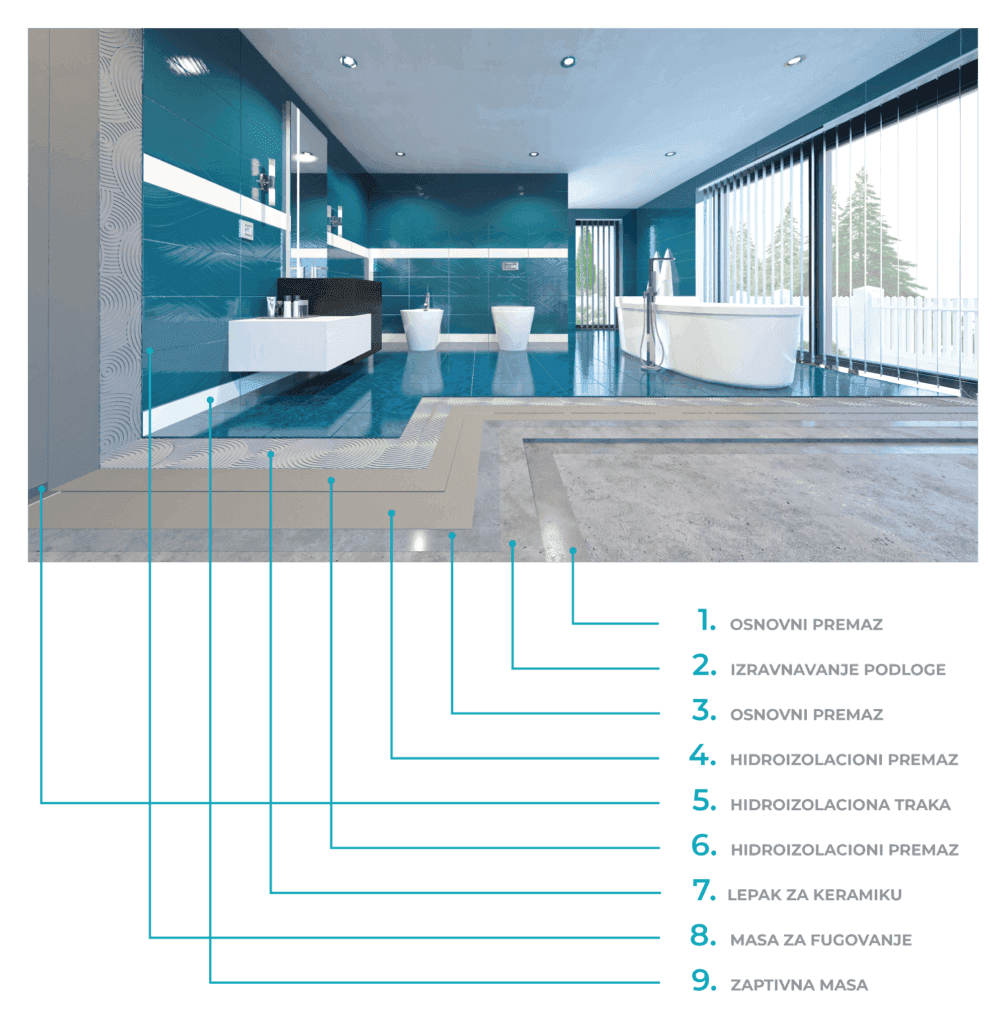
Before installing the given system solution, it is necessary to complete the works on the plumbing and sewage systems, as well as the electrical, ventilation, and heating installations, and to install the exterior and interior joinery. Since there is no perfectly even surface for finishing works, the uneven substrate needs to be prepared. First, the surface should be dusted, and then primed. For priming, we use BK-Ultra Prime universal primer. This layer improves adhesion, equalizes absorption, and binds dust particles. 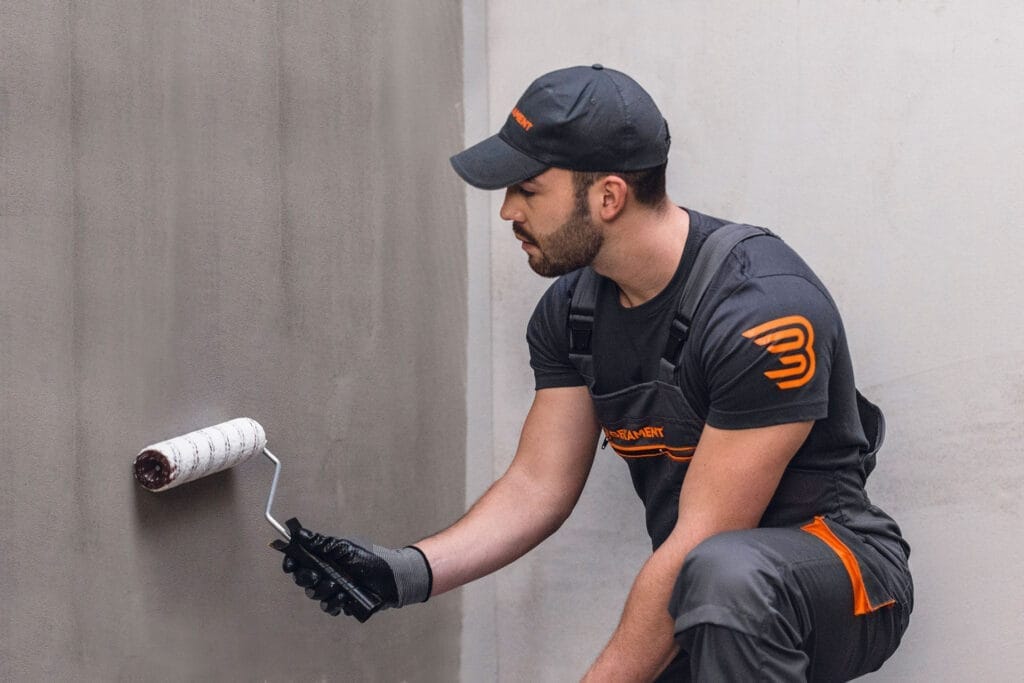 To achieve a sufficiently smooth surface without sharp edges and damage, it is necessary to fill in irregularities in the horizontal floor surface. For this purpose, we recommend the self-leveling compound BK-Liv 10. This compound is used for thin-layer leveling of concrete surfaces and cement screeds before applying waterproofing. After drying, this surface and the walls need to be primed with BK-Ultra Prime universal primer.
To achieve a sufficiently smooth surface without sharp edges and damage, it is necessary to fill in irregularities in the horizontal floor surface. For this purpose, we recommend the self-leveling compound BK-Liv 10. This compound is used for thin-layer leveling of concrete surfaces and cement screeds before applying waterproofing. After drying, this surface and the walls need to be primed with BK-Ultra Prime universal primer.
Once the substrate drying period is complete, a waterproofing coating is applied. The HYDRO CERAMIC BATHROOM system includes BK-HidroStop 2, a two-component, flexible polymer-cement waterproofing coating for horizontal and vertical surface protection against moisture. 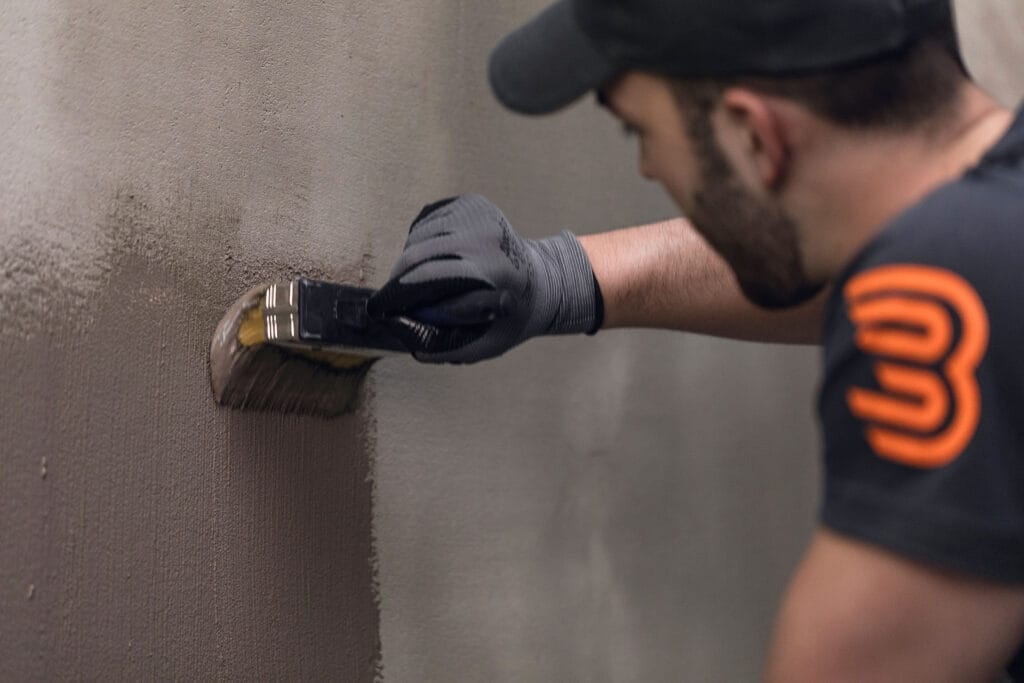 The first step in using the waterproofing coating in the HYDRO CERAMIC BATHROOM system involves applying it along the joints of contact surfaces. In the first layer of BK-HidroStop 2, applied to the corners and at the joint between the floor and wall, the BK Tape – an elastic waterproofing tape – is embedded. Then, a second layer of waterproofing coating is applied along the length of the tape.
The first step in using the waterproofing coating in the HYDRO CERAMIC BATHROOM system involves applying it along the joints of contact surfaces. In the first layer of BK-HidroStop 2, applied to the corners and at the joint between the floor and wall, the BK Tape – an elastic waterproofing tape – is embedded. Then, a second layer of waterproofing coating is applied along the length of the tape. 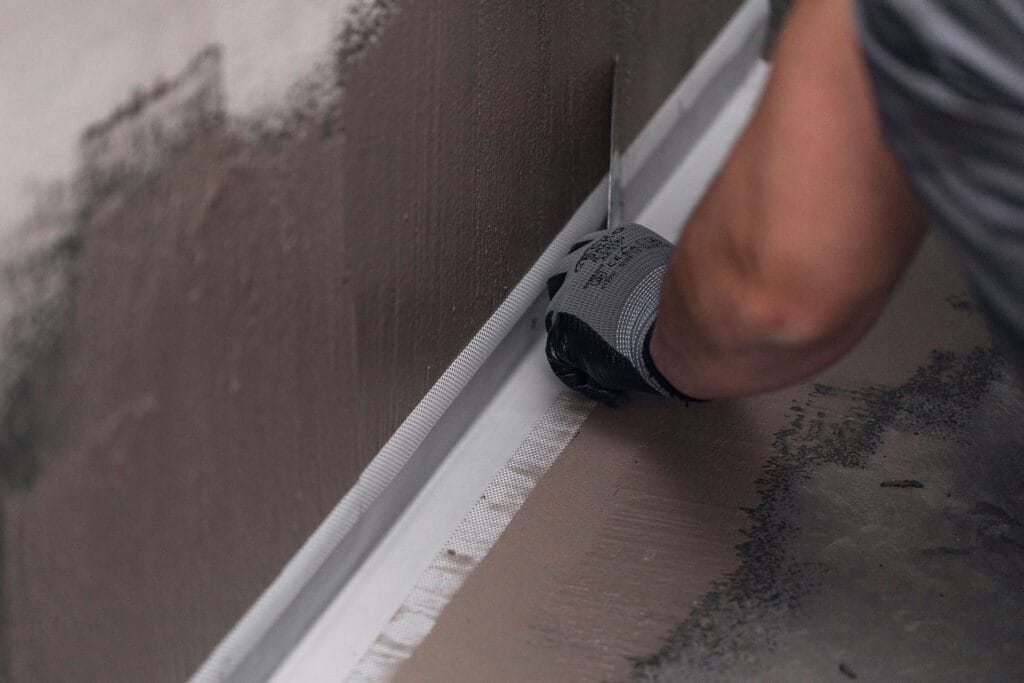 The waterproofing coating is applied to the remaining surface of the walls and floor, connecting the areas where the waterproofing tapes are located. After 12 hours of drying of the first layer, but while the first coat is still slightly damp, the second layer is applied. The second coat is applied crosswise, at a 90-degree angle to the direction of the first layer. The total thickness of the application should be around 2 mm.
The waterproofing coating is applied to the remaining surface of the walls and floor, connecting the areas where the waterproofing tapes are located. After 12 hours of drying of the first layer, but while the first coat is still slightly damp, the second layer is applied. The second coat is applied crosswise, at a 90-degree angle to the direction of the first layer. The total thickness of the application should be around 2 mm.
After the second waterproofing layer has dried for at least 24 hours, the installation of ceramic tiles can begin. The choice of adhesive depends on the dimensions and type of tiles, their water absorption, and the intended usage conditions. First, SiproFix BK 160 Super Flex, a flexible adhesive for ceramic and granite tiles for both interior and exterior use, is applied to the surface protected by the waterproofing coating. This adhesive can also be used for large-format tiles as well as in underfloor heating systems. The next step is the installation of ceramic tiles. Since they are installed using the contact adhesion method, at least 65% of the tile surface must be covered with adhesive. To ensure uniform spacing between tiles, we use plastic spacers. 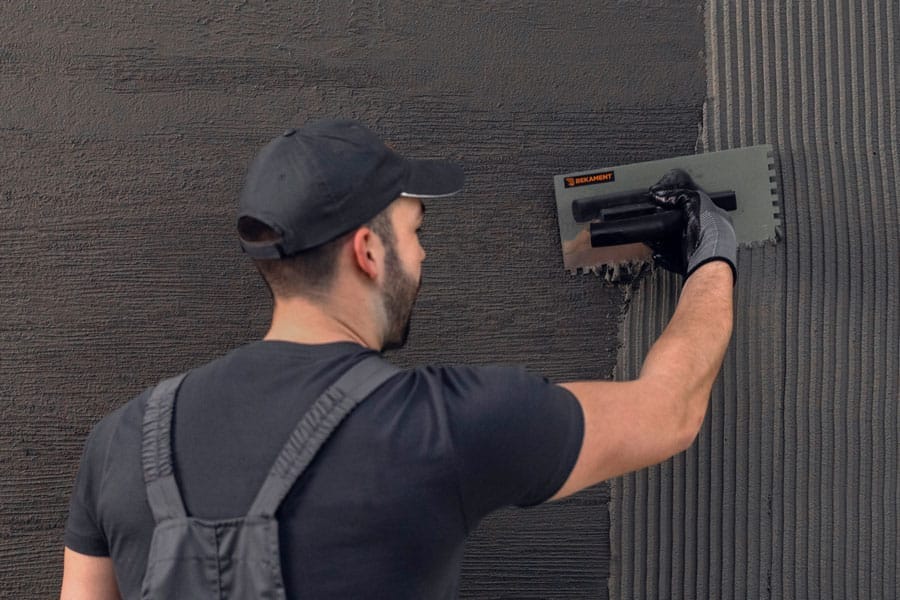
Once the adhesive has completely dried, we proceed with grouting and sealing. BK-Fugomal is a high-quality, water-repellent grout for tile joints. It is intended for joints up to 10 mm wide and offers a choice of 24 shades. The grout is applied with a rubber trowel, diagonally to the joint lines (at a 45-degree angle). It is suitable for both indoor and outdoor use, on vertical and horizontal surfaces.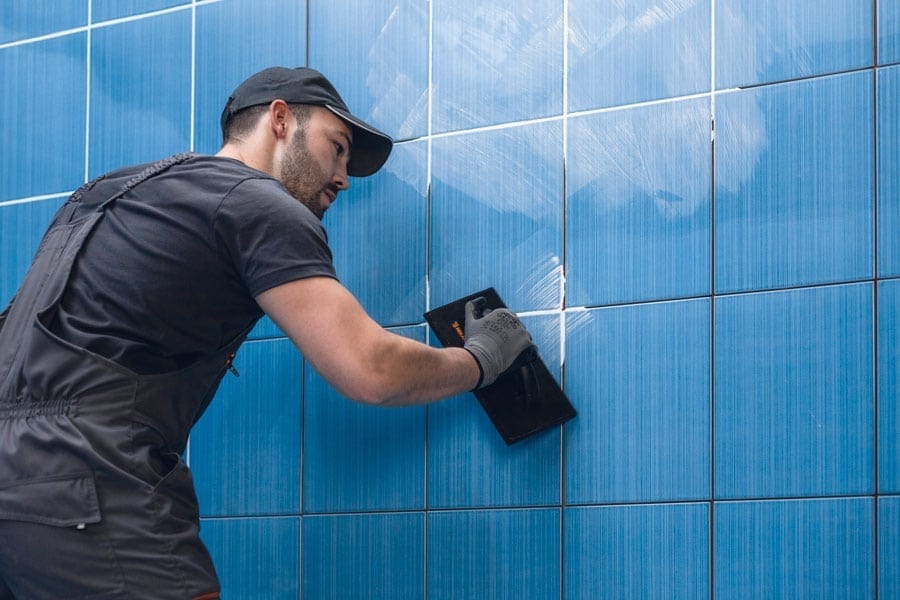 In the final stage of installing the HYDRO CERAMIC BATHROOM system for waterproofing and laying ceramics, BK-Silicon Sanitar is applied. This sanitary silicone sealant is used for sealing joints between ceramic tiles in corners and where the wall meets the floor, as well as for sealing joints between sanitary ware and tiles in the bathroom. The silicone sealant is resistant to aging, shrinking, cracking, mold, UV radiation, and water exposure. Would you like to learn more? For additional information regarding waterproofing systems, installation methods, and pricing, you can contact the Bekament professional technical support team via email at [email protected]. We invite you to share your opinions on the advantages of high-quality bathroom waterproofing on our social media channels, Facebook / Instagram. Did you like the text? Share it with your friends.
In the final stage of installing the HYDRO CERAMIC BATHROOM system for waterproofing and laying ceramics, BK-Silicon Sanitar is applied. This sanitary silicone sealant is used for sealing joints between ceramic tiles in corners and where the wall meets the floor, as well as for sealing joints between sanitary ware and tiles in the bathroom. The silicone sealant is resistant to aging, shrinking, cracking, mold, UV radiation, and water exposure. Would you like to learn more? For additional information regarding waterproofing systems, installation methods, and pricing, you can contact the Bekament professional technical support team via email at [email protected]. We invite you to share your opinions on the advantages of high-quality bathroom waterproofing on our social media channels, Facebook / Instagram. Did you like the text? Share it with your friends.